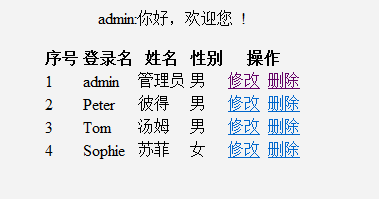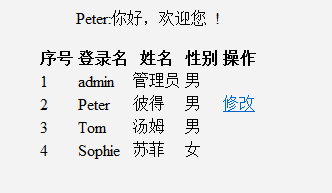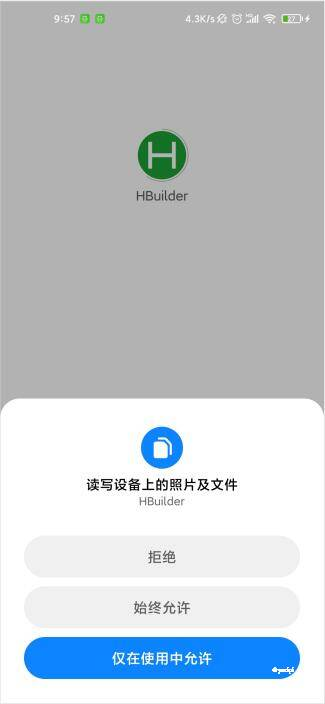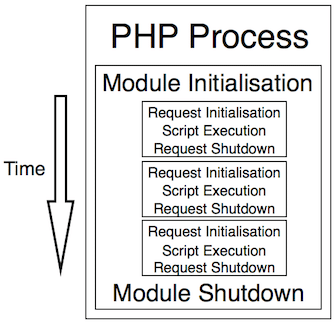Apache Shiro 授权例子
概述
在本例中使用Apache Shiro进行授权控制,基于事先定义好的角色控制用户的操作权限。
基于Apache Shiro 提供的标签库,在JSP页面上根据用户的授权状态来控制不同的操作行为。
业务逻辑
定义两种角色:administrator,common。
administrator代表管理员,可查看,修改,删除用户;
common代表普通用户,可查看用户,只能修改自己,不能删除用户。
数据准备
创建三个表
--用户信息表create table users(id int NOT NULL,name varchar(20),passwd varchar(20),real_name varchar(20),sex char(1),PRIMARY KEY (id));--角色信息表create table roles(id int NOT NULL,name varchar(20),PRIMARY KEY (id));--用户角色关系表create table user_to_role(user_id int NOT NULL,role_id int NOT NULL,PRIMARY KEY (user_id, role_id));
初始化数据
insert into users(id,name,passwd,real_name,sex) values(1,'admin','admin','管理员','1');insert into users(id,name,passwd,real_name,sex) values(2,'Peter','Peter','彼得','1');insert into users(id,name,passwd,real_name,sex) values(3,'Tom','Tom','汤姆','1');insert into users(id,name,passwd,real_name,sex) values(4,'Sophie','Sophie','苏菲','0');insert into roles(id,name) values(1,'administrator');insert into roles(id,name) values(2,'common');insert into user_to_role(user_id,role_id) values(1,1);insert into user_to_role(user_id,role_id) values(2,2);insert into user_to_role(user_id,role_id) values(3,2);insert into user_to_role(user_id,role_id) values(4,2);
工程代码
重构抽象类AuthorizingRealm的授权方法
protected AuthorizationInfo doGetAuthorizationInfo(PrincipalCollection principals) {String userName = (String) principals.fromRealm(getName()).iterator().next();//根据用户名查找拥有的角色List<Roles> roles = userService.getUserRoles(userName);if (roles != null) {SimpleAuthorizationInfo info = new SimpleAuthorizationInfo();for (Roles role : roles) {info.addRole(role.getName());}return info;} else {return null;}}
展现用户信息列表Controller
@Controllerpublic class MainController {private static final Logger LOGGER = LoggerFactory.getLogger(MainController.class);@Resource(name = "userService")private UserService userService;@RequestMapping(value = "/main.do")public String mainPage(HttpServletRequest request, ModelMap model) {HttpSession session = request.getSession(true);Subject user = SecurityUtils.getSubject();String userID = (String) user.getPrincipal();LOGGER.info(userID);session.setAttribute("USERNAME", userID);List<Users> users = userService.getAllUsers();model.addAttribute("users", users);return "main";}}
用户信息列表JSP页面
<%@ page language="java" contentType="text/html; charset=UTF-8"pageEncoding="UTF-8"%><!DOCTYPE html PUBLIC "-//W3C//DTD HTML 4.01 Transitional//EN" "http://www.w3.org/TR/html4/loose.dtd"><%@ taglib prefix="c" uri="http://java.sun.com/jsp/jstl/core"%><%@ taglib prefix="form" uri="http://www.springframework.org/tags/form"%><%@ taglib prefix="shiro" uri="http://shiro.apache.org/tags"%><%String userName = (String) session.getAttribute("USERNAME");pageContext.setAttribute("currentUser", org.apache.shiro.SecurityUtils.getSubject().getPrincipal().toString());%><html><head><meta http-equiv="Content-Type" content="text/html; charset=UTF-8"><title>Login Success</title><script type="text/javascript">function confirmx(mess){alert(mess);}</script></head><body bgcolor="#f3f3f3"><p align=center><shiro:guest>Hi Guest</shiro:guest><shiro:user><shiro:principal />:你好,欢迎您</shiro:user>!</p><form:form><table id="contentTable" align=center><thead><tr><th>序号</th><th>登录名</th><th>姓名</th><th>性别</th><shiro:hasAnyRoles name="administrator,common"><th>操作</th></shiro:hasAnyRoles></tr></thead><tbody><c:forEach items="${users}" var="user" varStatus="status"><tr><td>${ status.index + 1}</td><td>${user.name}</td><td>${user.realName}</td><td><c:if test="${user.sex=='1'}">男</c:if><c:if test="${user.sex=='0'}">女</c:if></td><shiro:hasRole name="administrator"><td><a href="#"οnclick="return confirmx('确认要修改该用户吗?')">修改</a> <ahref="#" οnclick="return confirmx('确认要删除该用户吗?')">删除</a></td></shiro:hasRole><shiro:hasRole name="common"><c:if test="${user.name==currentUser}"><td><a href="#"οnclick="return confirmx('确认要修改该用户吗?')">修改</a></td></c:if></shiro:hasRole></tr></c:forEach></tbody></table></form:form></body></html>
想使用Shiro标签首先引用标签库<%@ taglib prefix=”shiro” uri=”http://shiro.apache.org/tags"%>
本例中用到了
效果
使用admin/admin登录,页面如下:

![Image 1][]
使用Peter/Peter登录,页面如下:
![Image 1][]

[Image 1]:



































还没有评论,来说两句吧...